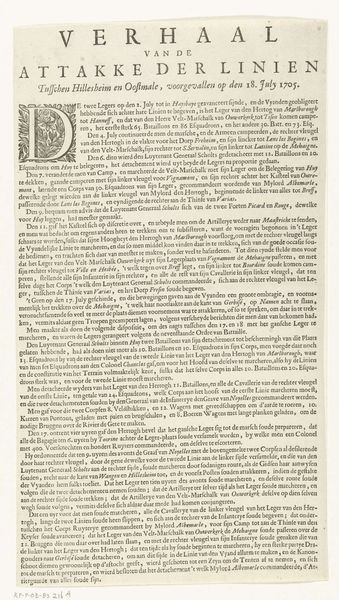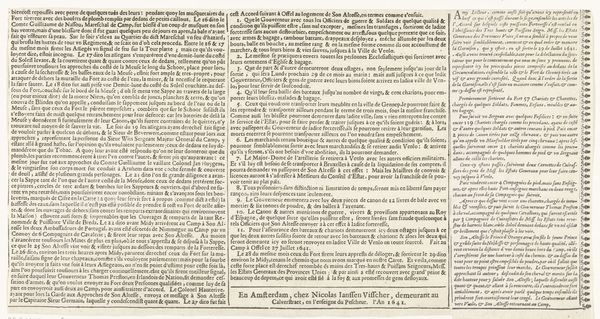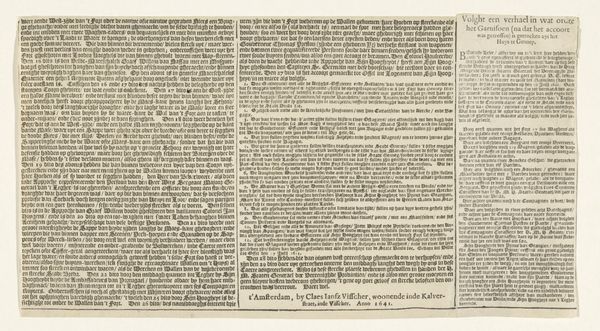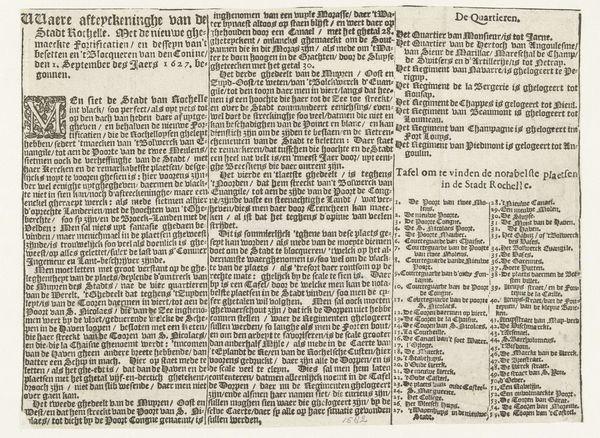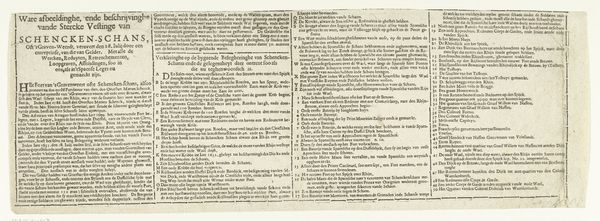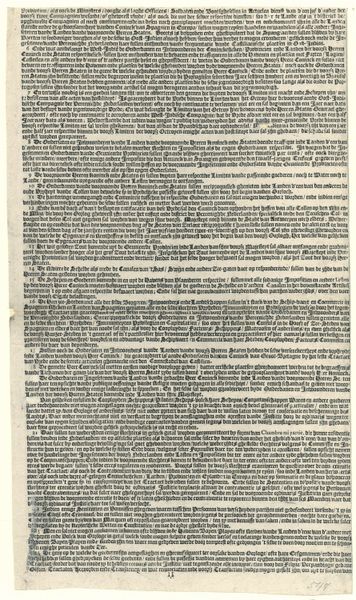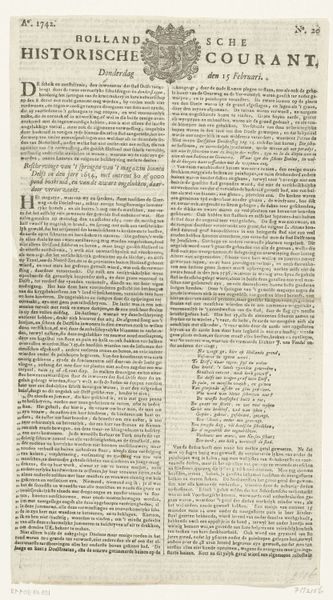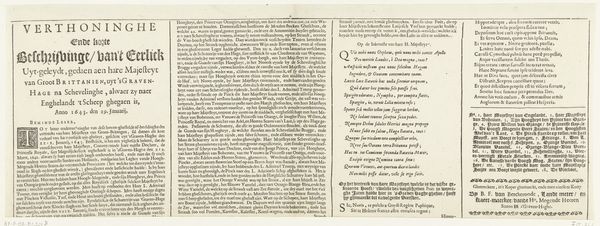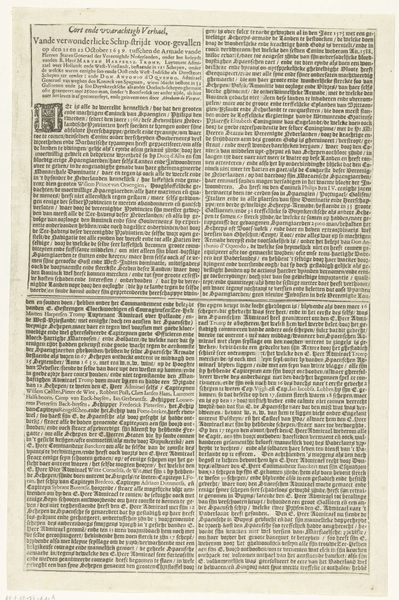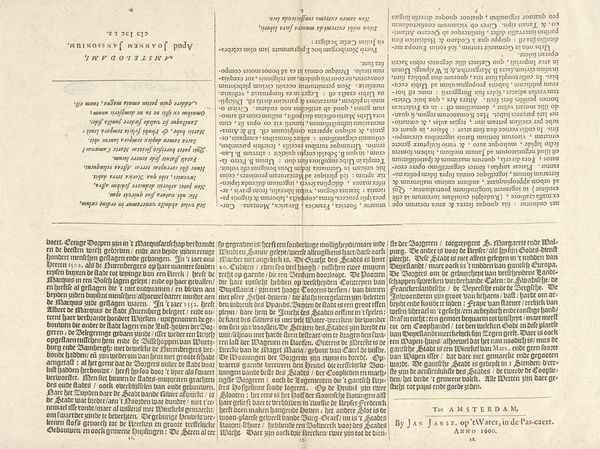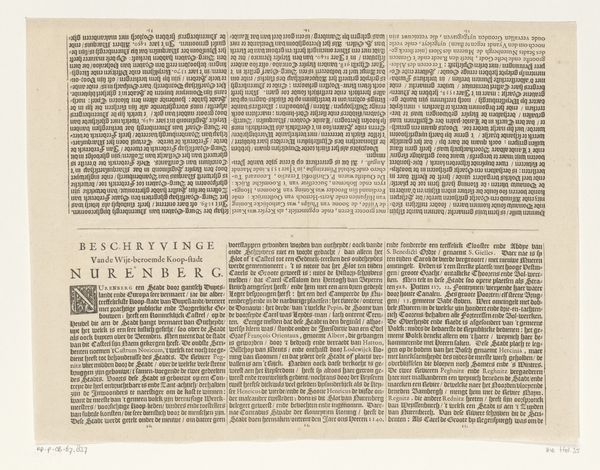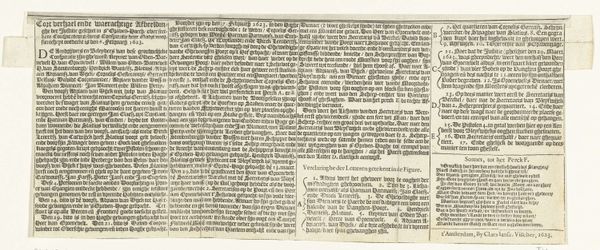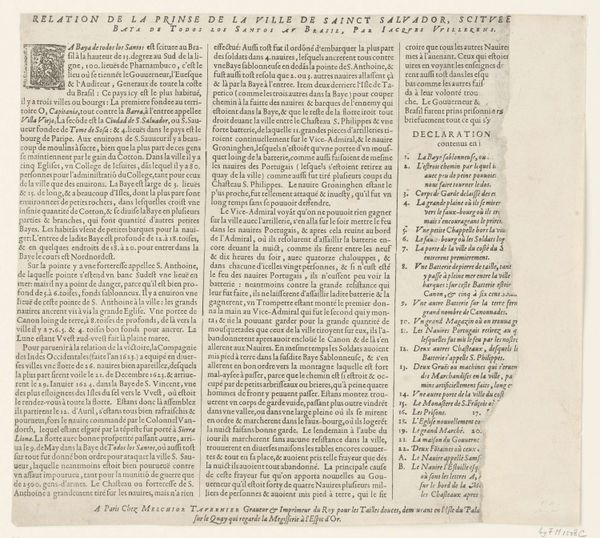
Tekstblad bij een kaart van Maastricht belegerd door Frederik Hendrik, 1632 1632
0:00
0:00
print, woodcut
#
print media
#
baroque
# print
#
landscape
#
woodcut
#
history-painting
Dimensions: height 202 mm, width 420 mm
Copyright: Rijks Museum: Open Domain
Curator: This print, "Tekstblad bij een kaart van Maastricht belegerd door Frederik Hendrik, 1632," a woodcut by Claes Jansz. Visscher, seems quite informative. So much text! What catches your eye, initially? Editor: Well, the sheer density of the text is striking. It's almost overwhelming. I’m curious about why information about this siege would be disseminated in this way, using print. What purpose did this kind of printed material serve? Curator: Exactly! Consider the social context of the time. This isn't just a recounting of history; it's a carefully manufactured account meant for consumption. Print allowed for relatively rapid dissemination of information – or, more accurately, propaganda – to a broader audience than ever before. Think about who had access to literacy, to this print, and what the economic factors might have been. Editor: So, it's about the accessibility and the active role of print in shaping public opinion about the siege of Maastricht? How does the choice of material – the woodcut technique – affect the message? Curator: A crucial question. Woodcut is a relatively inexpensive and reproducible printing method. This speaks to the desire for widespread distribution, marking an intention to reach a broad audience rather than elite art collectors. What does the apparent "roughness" of the image suggest about the relationship between process, speed and control when considering how these kinds of prints were circulating around Europe. What did that mean? Editor: That's fascinating. I hadn’t considered the social and economic implications of the woodcut medium itself. I see it’s not just about the history of the siege but the history of information and power dynamics, too! Curator: Precisely. By examining the materials and production of this seemingly straightforward historical document, we reveal the intricate relationship between art, labor, and the shaping of collective memory. I found this exciting too.
Comments
No comments
Be the first to comment and join the conversation on the ultimate creative platform.
